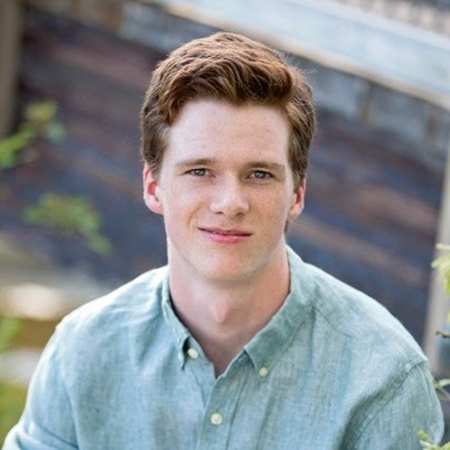CSpotlight: A healthy application of computer science

B.S. student Jack Rickman became interested in the medical application of artificial intelligence and machine learning thanks to research with professor Nikos Papanikolopoulos. Through his on-campus research opportunities and internships, Jack now has a clear vision for the type of work he'd like to pursue after graduation.
Why did you choose to study computer science at the University of Minnesota?
In high school, I was part of the robotics team, which introduced me to fundamentals of computer vision. I really enjoyed this, and knew I wanted to learn more about robotics and artificial intelligence. During the summer between my senior year of high school and my freshman year at the University, I binged on YouTube videos about computer science. I was so fascinated by what I learned—to the point that I decided to switch my major from mechanical engineering to computer science.
What inspired your interest in applying artificial intelligence and machine learning in a more medical aspect?
It was in large part due to the first job I had with professor Nikos Papanikolopoulos. I was assigned to work with Nick Heller, one of his Ph.D. students, on a project working with CT scans of cancerous kidneys. It was a really interesting type of data to work with, so when the project ended, I continued to work on medical problems. I enjoy how concrete the problems are, and how the solutions will directly help people.
Tell us more about your experience as an engineer for the Metropolitan Airport Commission (MAC).
Working with the MAC was an eye opening experience for me. I took over the project from a grad student who also work with Dr. Papanikolopoulos. The job was to improve a machine learning program that monitored the noise that aircraft flying over the city make. MAC runs a network of microphones all over the metro area in order to monitor noise pollution caused by the airport. They report the data to a number of agencies, but it is a large job to manually listen to all of the noise events captured by the microphones. The microphones don’t monitor continuously, they trigger when they detect a noise over a certain volume. However, things like lawnmowers and cars can trigger the mics, so they needed a solution, so we used a machine learning algorithm to sort through the noise automatically. It was a very interesting project, because working with sound was very different from my normal work on medical imaging.
What was the most memorable aspect of your internship with Vital Images?
My internship at Vital Images took place during the summer of 200, so everything was changed due to the pandemic. Vital Images produces the software that doctors use to view medical imagery in hospitals. The software requires quite a bit of artificial intelligence programming to be able to observe and detect bodily structures and organs, which is highly useful for clinical practice. One part that really stood out to me was imaging the lung volumes with CT imagery. We were able to observe the drastic difference between a healthy pair of lungs and a damaged pair from COVID-19.
What advice do you have for incoming computer science students?
My advice to incoming computer science students is to get involved in things as soon as you can—both academic and social. Clubs like the University of Minnesota Rocket Team or the Solar Vehicle Project are great ways to meet people, make connections, and build your resume at the same time. Also, talk to your professors as much as you can since it can lead to research positions and letters of recommendation in the future.